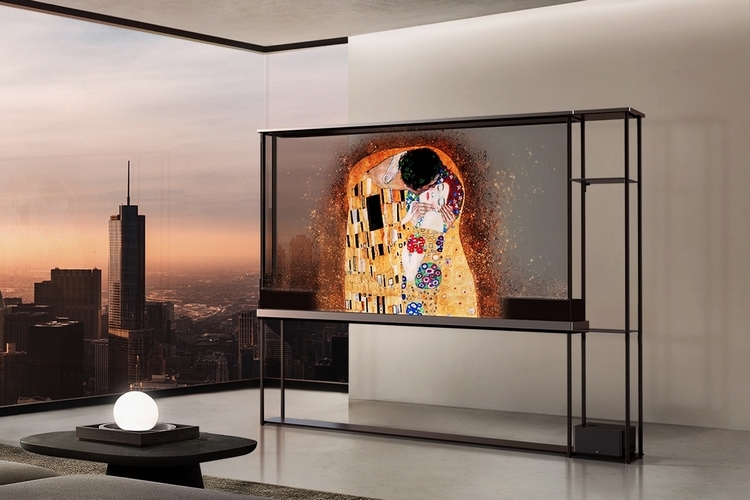
Display tech has traditionally been one of the biggest categories at CES. It’s that time of the year when manufacturers show off the biggest, brightest, and most cutting-edge TVs and monitors they’ve been prepping for release at some point in the coming months. Not only do you get to see upcoming flagships and standout display panels, you also find experimental prototypes and more unusual concepts that could find their way to production TVs and monitors at some point down the line.
This year’s show is filled with a large number of OLED panels with their high brightness, vivid colors, and near-infinite contrasts, making them the likely clear standard for TVs and monitors going forward. Just because they use similar panels doesn’t mean they’re all the same. With TVs, much of the difference comes down to the processing enhancements they can do to enhance picture quality on the fly, along with any software enhancements to improve the overall viewing experience. Of course, you get the occasional unique innovations, too, such as LG’s production-ready transparent TV and Hisense’s unbelievably bright TV, both of which are on hand at this year’s event. With monitors, the difference makers usually come down to portability, refresh rate, or unique functionality, with the best of lot showing us how to use the productivity and gaming staple in seemingly all new ways.
These are the best TVs and monitors at CES 2024.
LG Signature OLED T
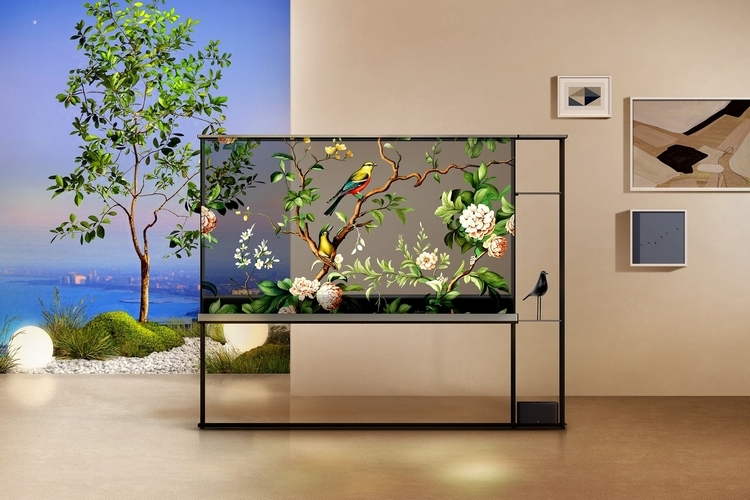
While it’s far from the first transparent TV we’ve seen at CES, LG’s Signature OLED T is the very first one that’s actually meant to see production. Yes, this transparent OLED TV is actually coming at the end of the year. What makes it exciting? We mean… it’s a 77-inch 4K OLED panel that allows you to see straight through any unlit area of the screen, making it possible to watch video content on the TV while the rest of your house appears in the background. Even better, you can easily toggle standard and transparent TV modes with a button on the remote, which deploys a contrast film at the back of the panel for traditional TV viewing and hides it away to enable the transparent function.
Hisense 110 UX LED
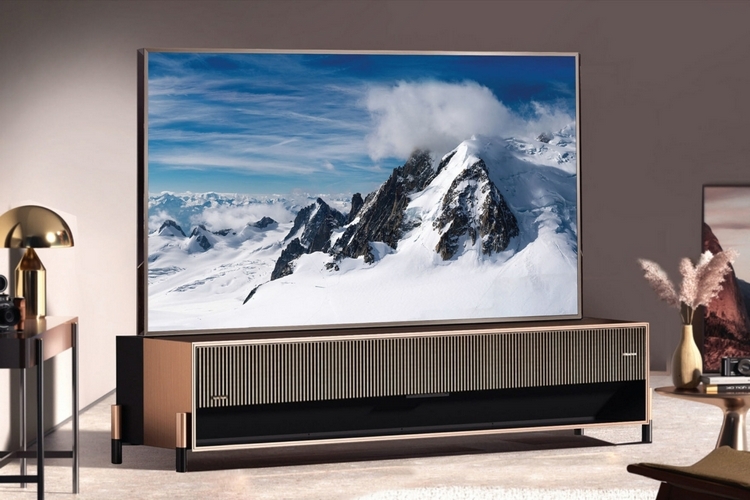
Easily the brightest TV to date, the newest addition to Hisense’s high-end UX LED line measures 110 inches and illuminates the living room with a whopping 10,000 nits of brightness. Yes, 10,000 nits, which is absolutely preposterous, considering most high-brightness TVs deliver around the 2,000 range. On top of that, the TV gets 40,000 dimming zones, allowing for incredibly detailed contrast, along with 95 percent coverage of the BT 2020 color space, an ultra-low 1.28 percent reflectance rate, and the outfit’s STW 2.0 wide-angle film, which claims to minimize backlighting leakage, halos, and color shift issues. Its AI chip is supposedly something special, too, allowing it to perform some advanced picture quality improvements in real-time for an overall more captivating display.
Samsung S95D OLED TV
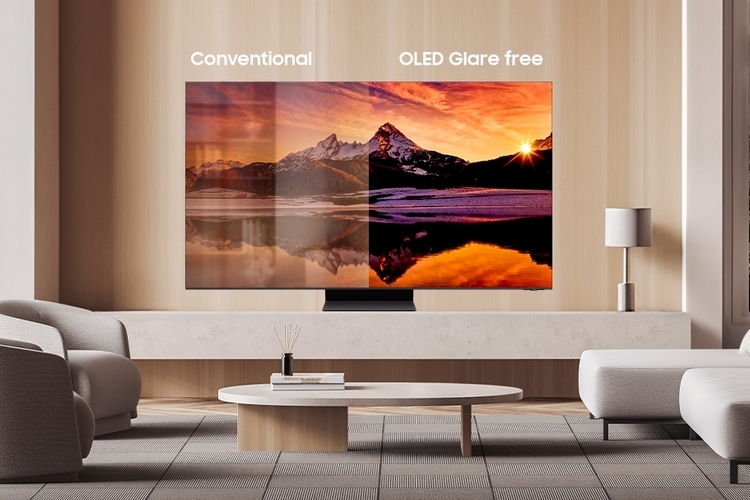
Samsung updated their flagship S95D series for CES 2024 with this model and it’s every bit as stellar as you’d expect in a top-of-the-line panel from one of the biggest TV manufacturers. The new edition brings 20 percent higher brightness than its predecessors, peaking at 1,600 nits, while delivering the same crisp details and vibrant colors. One of the big changes for this iteration is the new OLED Glare-Free coating designed specifically for the S95D series, which, the outfit claims, reduces reflections and preserves color accuracy even when you’re watching TV in well-lit spaces. It also boasts advanced picture-quality engines to ensure optimal visuals, along with a high 144Hz refresh rate, making it a great TV for console gaming.
TCL QM891G QD Mini LED
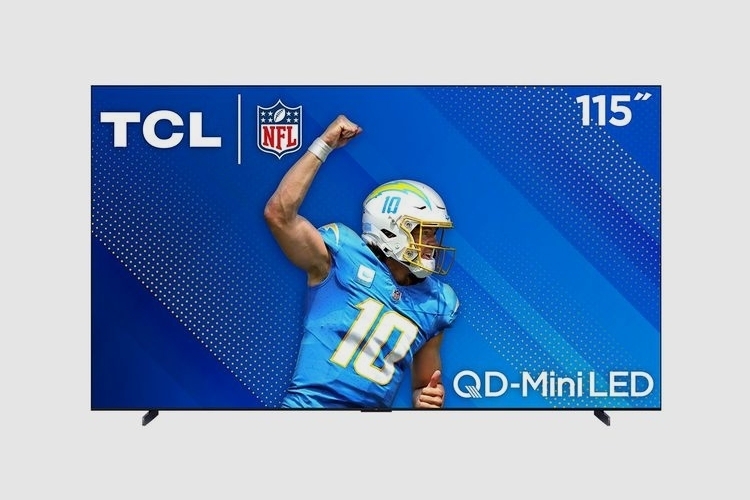
TCL’s best TV at CES is this tantalizing 115-inch behemoth, which comes in an ultra-slim unibody enclosure that’s designed to hang up on the wall using simple magnetic mounts. Yes, that sounds treacherous, but it, apparently, works. It’s one of the brightest TVs at the show, boasting a whopping 5,000 nits of peak brightness, all while allowing for intense contrast with its 20,000 local dimming zones. It reproduces 98 percent of the DCI-P3 color spectrum, with vibrant colors that feel completely natural, while a 120Hz refresh rate (144 Hz with VRR) ensures it allows for smooth gaming visuals. Other features include an anti-glare screen coating, ATSC 3.0 tuner to make it compatible with next-gen TV broadcasts, and a 6.2.2-channel Dolby Atmos speaker with a subwoofer.
LG OLED G4 Line
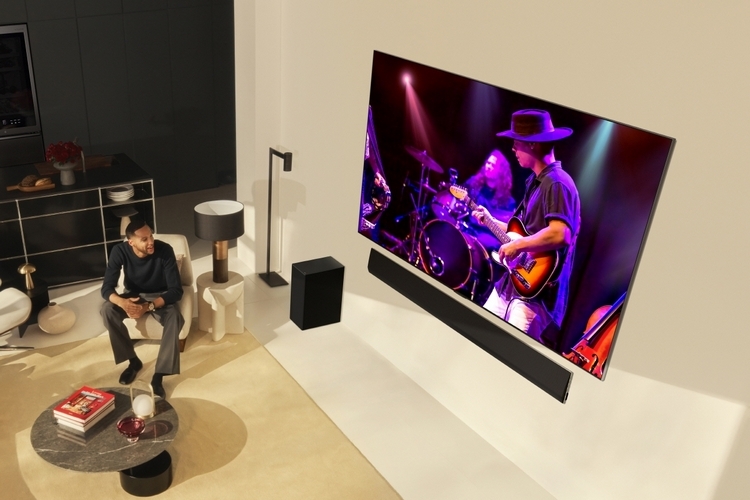
Just as the G3 garnered a lot of attention at last year’s CES, its successor, the LG G4, is doing the same this year. Of course, it’s no surprise it’s getting lots of love, with the panel’s new Alpha11 AI processor, which boasts 70 percent improvement in graphic performance and 30 percent faster processing speed compared to the last generation, ensuring this will make your old film collection and home movies look surprisingly great on a modern TV. It also enables a pair of additions to LG’s AI Picture Pro tech, namely AI Director Processing (which adapts the picture to best match the director’s intended color tone) and ObjeLG OLEct Enhancement by Visual Perception (which individually analyzes and enhances every pixel in the frame), while gamers get a 144Hz refresh rate, an auto-low latency mode, VRR support, and full Nvidia G-Sync certification. The TV comes in five sizes, namely 55-, 65-, 77-, 83-, and 97-inches.
Samsung Neo QLED 8K
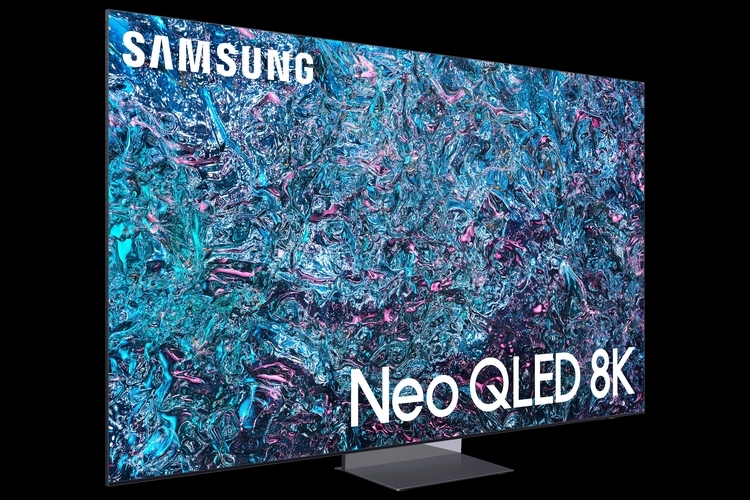
With 4K content now widely available in most streaming services, it’s probably time to consider 8K panels if you’re looking to future-proof with your next TV purchase. Samsung showed off one of the nicest 8K mini LED panels we’ve seen at CES with this series, which comes in 65- to 85-inch sizes. The Neo QLED QN900D, specifically, is supposedly the slimmest, most premium 8K TV to ever come to market so far, bringing elements like 8K AI Upscaling Pro, AI Motion Enhancer Pro, Real Depth Enhancer Pro, and a VRR of 4K at 240Hz (first time ever on a TV), among other features. Sadly, it won’t be able to upscale HD content to 8K, although it will process it upwards to 4K and 4K content to 8K. The outfit looks to make the TV useful even with the turned by off by turning it into an optional information center that can be customized to your liking.
Asus Zenscreen Fold

The most unique portable monitor we’ve ever seen, this 17.3-inch OLED panel can fold in half, turning it into a compact 12.5-inch clamshell that should easily fit in most backpacks. That’s right, you can have a second monitor that’s bigger than your laptop’s monitor when you’re working in the field. Even better, you can use it as single 17.3-inch monitor with 2,560 x 1,920 resolution or a pair of smaller 12.5-inch 1080p displays, allowing you to enjoy a three-monitor setup while you’re typing away at the local coffee shop. It uses a kickstand to stand upright in either landscape or portrait orientation, although there’s also a tripod slot, in case you want to elevate it above the desk. Obviously, this will be priced well above what typical portable monitors go for, but that’s probably worth it if you want to have a large OLED panel that folds smaller than your laptop.
Acer Predator Z57
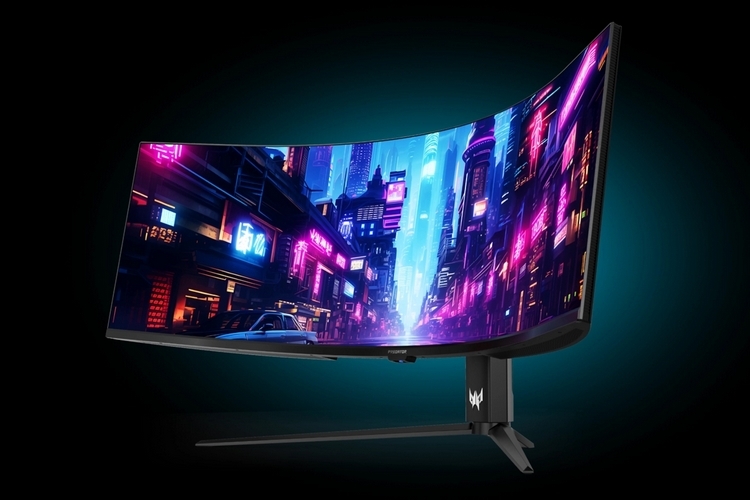
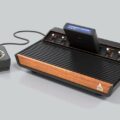
This mini LED gaming monitor brings all the brightness, contrast, and colors everyone loves about that cutting-edge panel, albeit in a 57-inch widescreen curved form factor (32:9 aspect ratio and 1000R curvature) that looks like an absolute monster when sitting on a gaming desk. It comes with 7,680 x 2,160 resolution, so you can see your games in superb details, with a reasonably smooth 120Hz refresh rate, 2,304 dimming zones for excellent contrast, and 98 percent coverage of the DCI-P3 color space. The monitor also has certified support for AMD Freesync Premium, a KVM switch for fast switching between devices, and an adjustable stand (height, swivel, and tilt).
Samsung Odyssey OLED G8
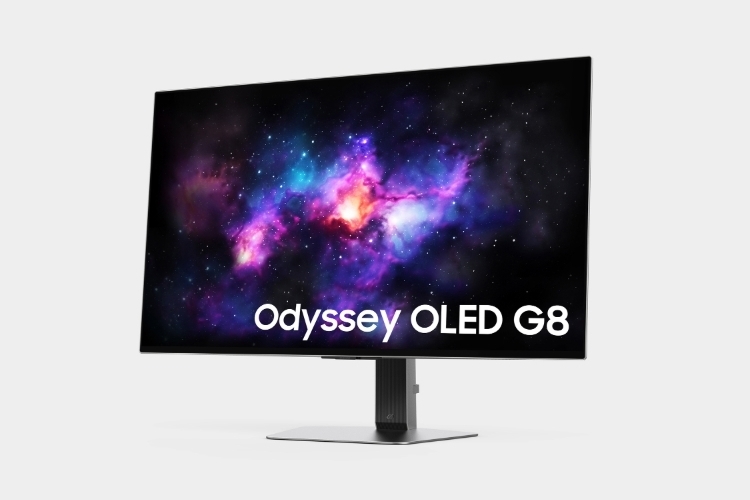
We’ve always known Samsung for bringing monitors with wild curves and unusual aspect ratios during CES. This year, they decided to be just a little more conventional with this 32-inch, 16:9 aspect ratio monitor, which was a pleasant surprise. What makes it really pleasant is the 4K QD OLED panel, which is a much welcome addition to our gaming monitor options, while a 240Hz refresh rate, 0.03 GtG response time, and AMD Freesync Premium Pro ensures it’s highly-capable for gaming. It also boasts Samsung’s OLED Glare-Free technology for minimizing light reflections, VESA DisplayHDR True Black 400 for vivid colors, and support for Samsung’s Multi-Control system that lets compatible devices easily transfer data from one to the other.
Asus ROG Swift PG27AQDP
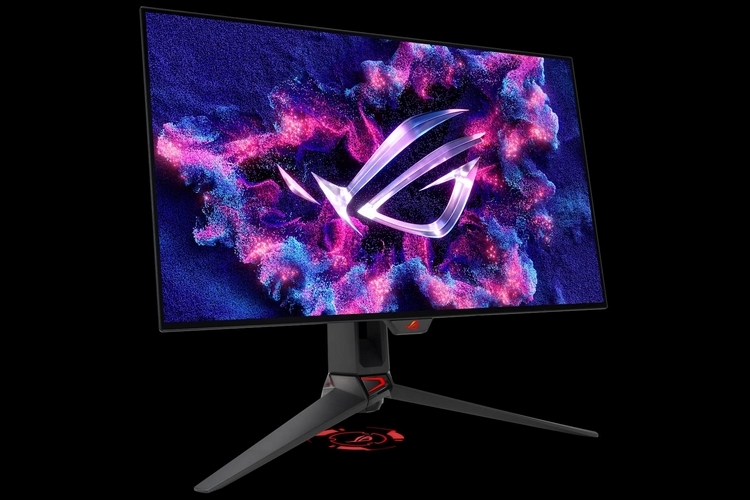
The selling point for this 26.5-inch monitor is pretty straightforward: it gives you 1440p resolution at a whopping framerate of 480Hz. That’s right, you get 1440p at 480Hz, which is absolutely unprecedented even with high-end gaming monitors. Even better, the darn thing uses an LG MLA OLED panel, so you’re going to get some gorgeous-looking graphics out of this thing, whether you’re playing AAA games or just taking a break to catch a movie. It also boasts a peak brightness of 1,300 nits, which is impressive for an OLED panel, along with 99 percent coverage of the DCI-P3 color space and, according to the outfit, professional-grade color accuracy. Sure, it’s not the biggest display for gaming, but 26.5 inches is very comfortable and that resolution/framerate combo just makes it very special in this current gaming landscape.
Acer Predator SpatialLabs View 27
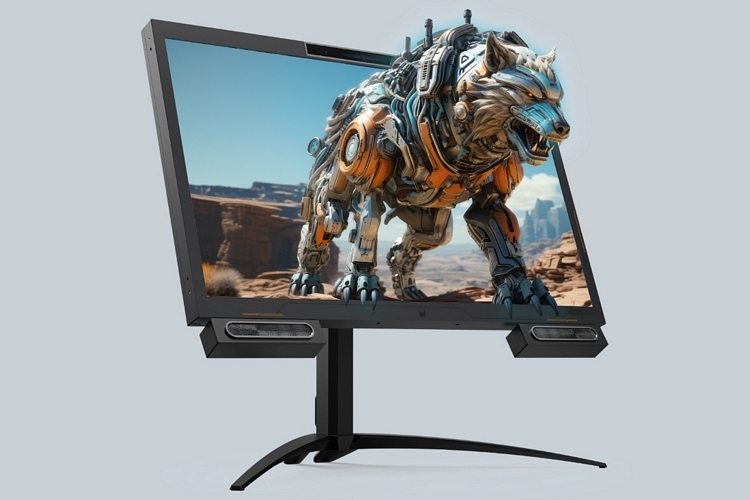
We were never sold with 3D TVs and monitors in the past – it just didn’t feel like it’s anything more than a novelty. Sure, it’s extremely useful for people doing 3D work, but having to put on a pair of glasses just to watch something didn’t quite vibe. Nowadays, they’re still trying to bring 3D to our displays, but in a glasses-free format, just like this new 27-inch 3D monitor from Acer, which delivers 4K resolution and a 160Hz refresh rate. What makes it unique, though, is the 3D capability that delivers stereo 3D visuals when you’re using it with compatible content with no need for 3D glasses. Instead, it uses cameras that track the user’s eyes and provides a 3D view of the graphics based on how they’re looking at the screen. It’s surprisingly impressive. The only catch is, it only supports games that employ the outfit’s own SpatialLabs TrueGame, which is currently used for a few dozen titles that include popular games like Dark Souls Remastered, God of War, Devil May Cry 5, Project Cars 3, Forza Horizon 5, and more.